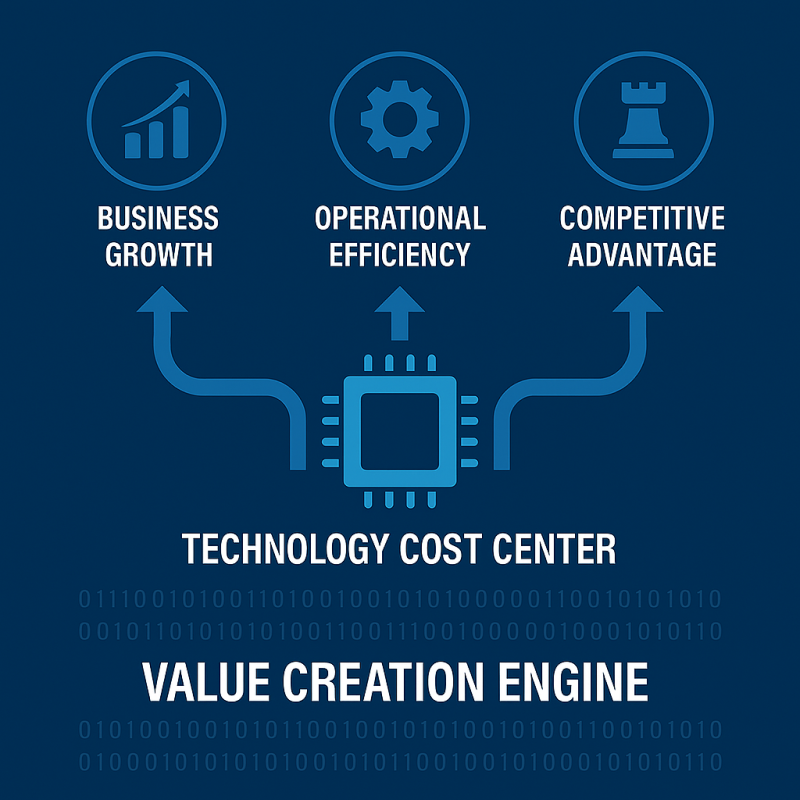Rethinking the Role of Technology
For decades, capital-intensive industries like mining, oil & gas, and heavy equipment have treated technology as a budget line item to be managed—rarely as a core lever of competitive advantage. But in today’s data-driven, risk-intensive environment, this legacy mindset is more than outdated—it’s dangerous. Companies that view technology only through the lens of cost containment are quietly falling behind those that use it to unlock performance, foresight, and strategic speed.
The Overhead Mindset That Undermines Innovation
In most boardrooms, discussions around enterprise systems, data platforms, and analytics still begin with costs—software licensing, maintenance budgets, consulting fees. Yet these same companies invest millions in new equipment, exploration, and logistics infrastructure without blinking, because they see a clear return. The disconnect? Technology investments are too often positioned as "supporting tools," not strategic enablers. This framing limits executive commitment and disempowers IT and operations leaders from advocating for transformative platforms.
The Real Cost of Disconnection and Delay
For multi-entity industrial companies, complexity multiplies silently: disconnected systems, inconsistent data definitions, and reactive decision-making. When CFOs must consolidate reports from spreadsheets across ten sites, or maintenance teams can’t access unified asset histories, the cost isn’t software—it’s inefficiency, rework, downtime, and opportunity loss. The companies that “save” by deferring digital investment pay far more in performance drag and unquantified risk. The new reality: operational agility is the real cost center—if neglected.
Treating Technology as a Strategic Asset
Progressive leadership teams are rewriting their digital narratives. Rather than asking, “What will this cost us?” they ask, “What value does this unlock?” They treat ERP systems, BI tools, and AI-driven platforms as assets—akin to a processing plant or a new haul fleet—designed to extend capacity, improve uptime, reduce waste, and accelerate decisions. These leaders budget for transformation with ROI models that span productivity, risk, and scalability—not just IT line items.

Redefining ROI: From System Uptime to Business Uplift
When technology is framed as an enabler, the metrics shift. Uptime and cost per user are replaced by throughput gains, margin protection, risk reduction, and cash flow accuracy. Business intelligence tools are judged not on dashboard beauty, but on how often they change executive behavior. Predictive maintenance algorithms are valuable only if they reduce actual failures. The true ROI of digital infrastructure is its ability to reduce lag between problem, insight, and action.
Executive Ownership of Technology Strategy
In a digitally intelligent enterprise, technology strategy cannot be delegated to IT. The CEO, CFO, COO, and board must see it as foundational to governance, growth, and risk management. In many mining and O&G firms, CIOs are rising to the board table—not just to report—but to co-lead value transformation. Strategic tech decisions—like standardizing ERP across entities or embedding analytics in budgeting—are now business model choices, not operational ones. Ownership must sit at the top.
The Growing Competitive Divide
Executives who continue to see technology as a cost are unintentionally creating a gap they can’t close. Competitors who view technology as a platform for transformation are pulling ahead—not just in systems, but in margin, agility, safety, and scalability. In the next commodity cycle, it won’t just be geology or machinery that differentiates market leaders—it will be how intelligently, consistently, and strategically they’ve embedded digital into their operating core.
The Choice: Lead with Technology or Lag Behind
The question is no longer whether digital transformation is necessary—it’s whether you will lead it or follow others who already have. Viewing technology as a value enabler rather than a cost center reframes not just IT budgets, but enterprise strategy. For capital-intensive industries with razor-thin margins and rising complexity, transformation isn’t about innovation for its own sake—it’s about survival, scalability, and long-term advantage.
